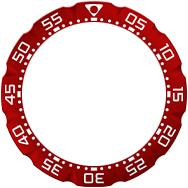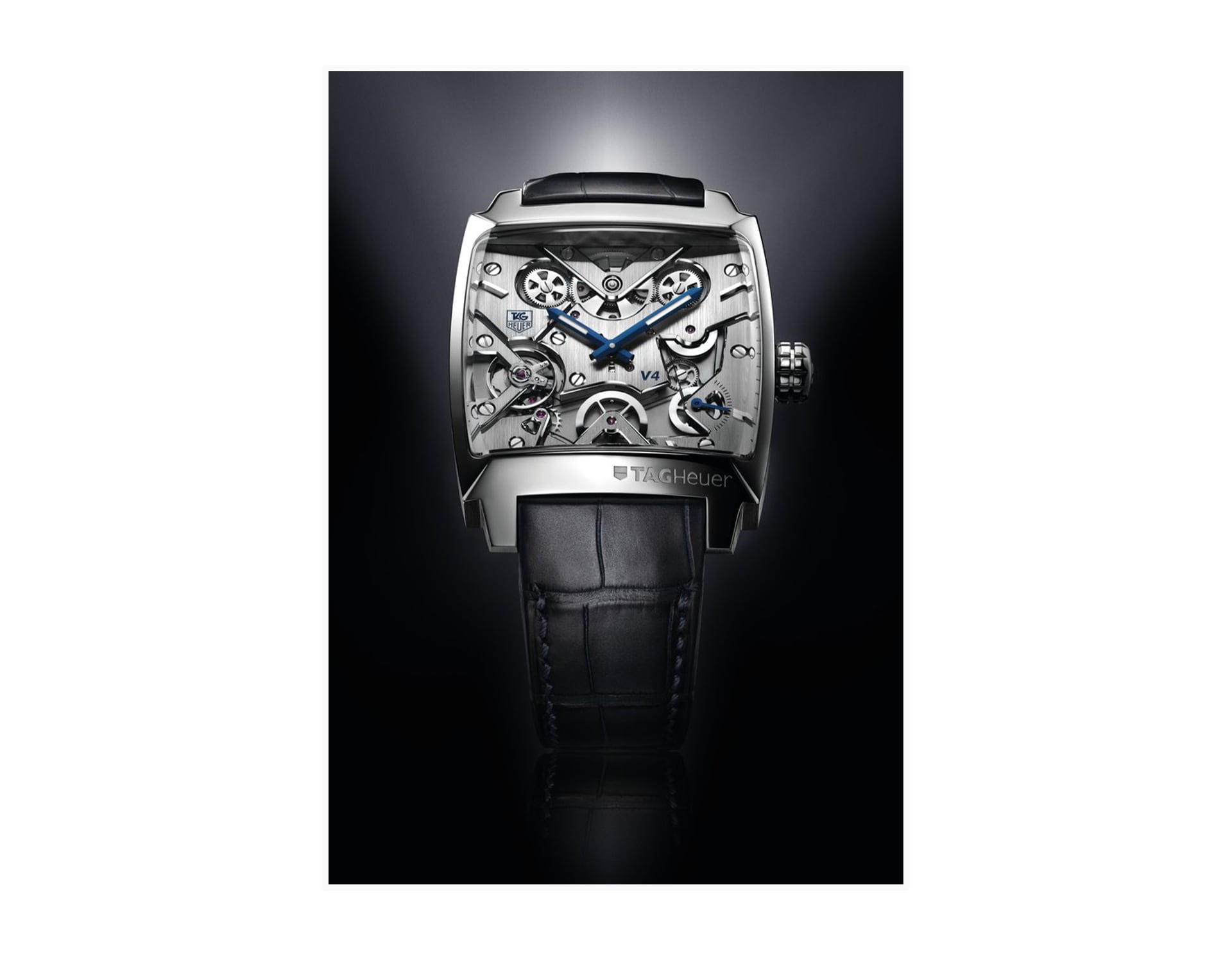




To open the 21st century, TAG Heuer would develop entirely new approaches to the construction of watches and their movements.
These innovations would provide record-breaking precision, in watches styled to reflect their leading-edge technologies.

The Monaco V4 Concept Watch introduced an entirely new approach to powering a mechanical watch, with construction that evokes a racing engine. This radical watch used an ingot on rails to produce power, tiny belts to transfer this power, and four barrels that mimic the lay-out of an engine block. Cases for the Monaco V4 have included platinum, titanium, carbon matrix composite, and rose gold, and TAG Heuer marked the 10th anniversary of the model with a tourbillon option.

In 2004, TAG Heuer introduced the Aquaracer line of watches, with roots going back to Heuer’s first dive watches from the early 1980s. The first generation Aquaracers offered a 300 meter depth rating, while the next generation (introduced in 2009) increased this to 500 meters. The Aquaracers have used an enormous variety of materials, colors and movements, all designed to provide the diver with a highly-legible, reliable watch.

In 2010, TAG Heuer released its first in-house chronograph movement, the Calibre 1887. The Calibre 1887 is an integrated movement, featuring a column wheel and the same style of oscillating pinion that Heuer had patented in 1887. The Calibre 1887 movement powered a new generation of TAG Heuer Carrera chronographs, and would serve as the basis for the Heuer 01 in-house movement.

In the mid-2000s, TAG Heuer created a workshop that would develop and incorporate cutting edge technologies to produce a very limited number of innovative watches, all being handmade. The Mikrograph (2011) used an integrated movement to offer 1/100 second accuracy, with the central chronograph hand making a full revolution every second. The Mikrotimer Flying 1000 extended TAG Heuer’s ultra-high frequency line-up to 1/1,000 second accuracy, with the central chronograph second hand completing 10 rotations per second. The name was derived from the Heuer Microtimer, from 1966, an electronic timer that was the world’s first timer with 1/1,000 accuracy. The last of this series was the Mikrogirder, shown in 2012, which offered 5/10’000 second precision. The TAG Heuer Carrera “Pendulum” watch, introduced in 2010, used magnets to control the movement, rather than the traditional hairspring. TAG Heuer extended the Pendulum technology when it introduced the Mikropendulum Tourbillon, which offered 1/100 second accuracy and a tourbillon, while the MikropendulumS incorporated two magnetic Pendulums and a double tourbillon.




